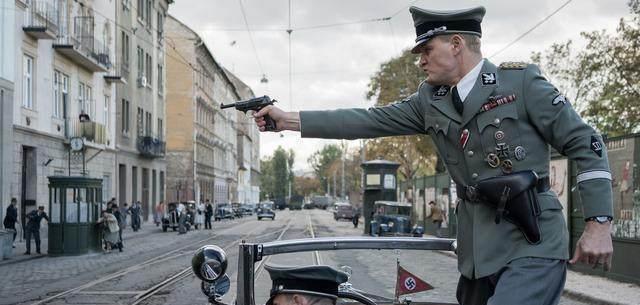Karl Dönitz, Admiral of Nazi Germany, was Commander-in-Chief of the Navy, President and Supreme Commander of the Armed Forces during World War II. Dönitz was born on 16 September 1891 in the town of Glinau, on the outskirts of Berlin. My mother died early. His father was an engineer, always urging him to study hard and pay attention to cultivating his interest in learning.
In April 1910, after graduating from high school in Weimar, Dönitz joined the German Navy, training on board the cruiser Herta before being admitted to the Flensburg-Mowick Naval School. After graduating in the fall of 1912, he was assigned to the cruiser Breslau as an alternate officer. It was the winter of that year, when the Balkan War broke out, Dönitz accompanied his ships to the Mediterranean to participate in the blockade of the port of Montenegro, and to show off his might against the Russian-backed Serbs. In May of the following year, he participated in the landing operations of Western powers in Albania, preventing Serbs from settling on the Adriatic Sea. He was captured on 4 October 1918 after attacking a British merchant fleet.

In the prisoner of war camp, the new submarine tactic, the "wolf pack tactic", was begun to study, which posed a great threat to the maritime transport of Britain and the United States in the Atlantic In the early stages of World War II, and was therefore called "undersea devil" by the Allies.
German submarine "UB68" cruised near Sicily on October 4, 1918. The captain spotted an enemy convoy approaching during the night. The submarine immediately surfaced to fire, hitting a ship. Then the captain gave the dive order, and the sunroof closed within seconds. Immediately after, an unexpected accident occurred, and the submarine's head was heavy, sinking like a stone straight into the depths of the sea. Sailors knew what that meant. If you can't try to stop the boat from sinking, the pressure of the water will crush the boat.
The depth table points to 90 meters. When the sailors panicked, the captain issued an order to fill the main tank with air. Other than that he had no other choice. The compressed air hissed into the main tank with a sizzling sound, and pressed the water out, and after a few seconds of stillness, the hull of the boat rushed upwards like an arrow off the string, surfaced, and was exposed to the encirclement of the enemy convoy.
The submarine was immediately sunk. Among the rescued was captain Dönitz of the UB68. Although he lost a submarine, he discovered a new way of attacking submarines. During World War II, Dönitz was commander of the submarine force and later promoted to commander-in-chief of the Navy. In 1959, Admiral Kenningham, the British Minister of the Navy, commented on him: "We should first know what tricks Dönitz came up with to conquer us when Germany abandoned its plan to invade Britain. The main point of his never-ending strategy is to use the sinking of our merchant ships as a means to achieve the goal of slowly burying us. He knew that the Atlantic Ocean was the only battlefield for German victory, and he was strenuously opposed to dispersing his forces in the Mediterranean, or even the North Sea. Again, I would like to point out that this is the only correct insight. Dönitz was the most dangerous enemy to Britain after the Dutchman DeLutte. ”
In 1945, Dönitz was appointed president by Hitler at a critical juncture of the country's survival. After Hitler committed suicide, he also delivered a eulogy on the radio to the German nation.
Dönitz did three weeks of struggling with the death line of the German president. He decided to continue the war with the East so as not to put the German military and civilians into the hands of the Russians. To this end, he also asked for anaglo-American help, but his request was sternly rejected by Eisenhower. Dönitz himself was eventually thrown into a prisoner camp.
At the time of his trial at the International Military Tribunal, Dönitz was charged with directing criminal naval warfare and participating in preparations for a war of aggression. During the trial, the defence of the defence proved that Dönitz had not used criminal means to direct the naval battle, and was acquitted in this respect, but was sentenced to 10 years' imprisonment for the establishment of the second offence.
After the sentence was pronounced, Dönitz was taken to Spandau Prison to serve his sentence. He settled in Omile after his release in October 1956